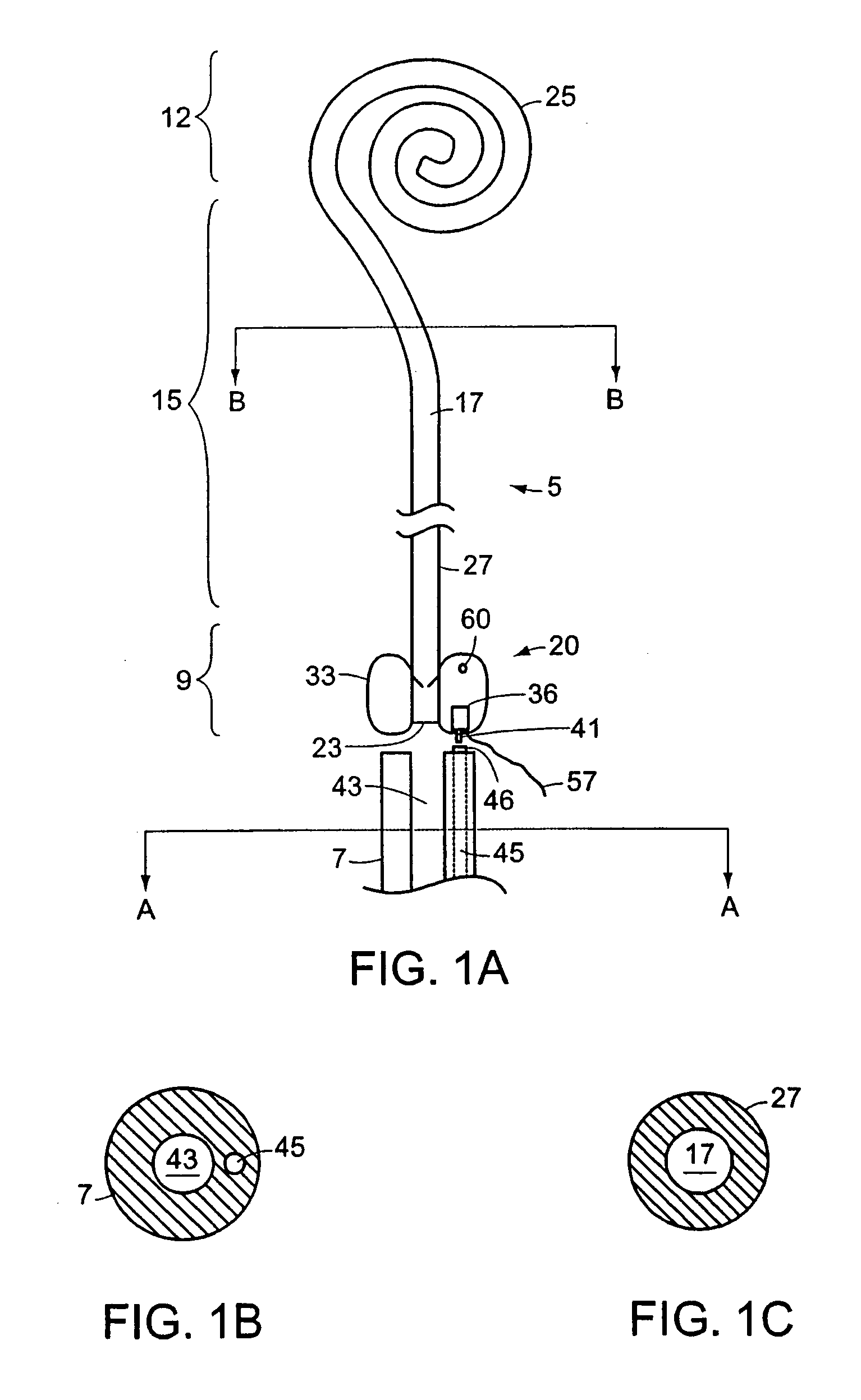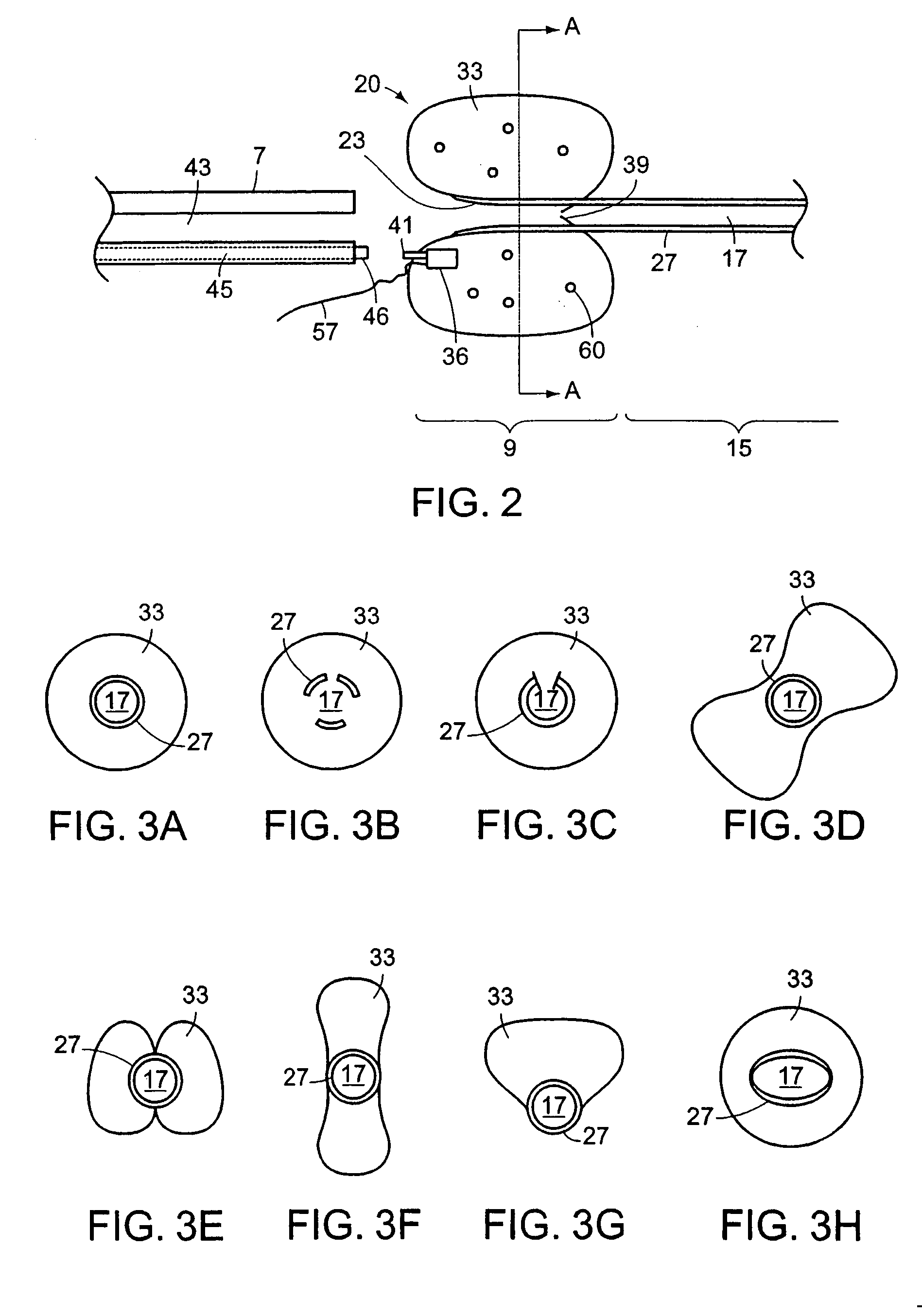Ureteral stent with end-effector and related methods
a ureteral stent and end-effector technology, applied in the field of ureteral stents, can solve the problems of threatening renal function, ureteral stents, and ear treatment, and achieve the effects of reducing fluid retention, less irritation, and minimizing patient discomfor
- Summary
- Abstract
- Description
- Claims
- Application Information
AI Technical Summary
Benefits of technology
Problems solved by technology
Method used
Image
Examples
Embodiment Construction
[0029] The invention generally concerns a drainage device that, when positioned within the ureter of a mammal, assists in reducing fluid retention by facilitating the drainage of urine from the kidney through the ureter and into the urinary bladder while simultaneously minimizing patient discomfort. A common feature of the invention is a proximal end-effector, including a balloon. Throughout the discussion of the illustrative embodiments, it is to be understood that in the figures, like reference characters generally refer to the same parts throughout different views.
[0030] Referring to FIGS. 1A-1C, a ureteral stent system comprising a ureteral stent 5 and pusher tube 7 according to the invention, in general, is shown. The stent 5 is suitable for use with the pusher tube 7 for implantation within the ureter of a patient, and includes a proximal portion 9, a distal portion 12, and an elongated body portion 15 defining a lumen 17 which extends between the proximal portion 9 and the d...
PUM
 Login to View More
Login to View More Abstract
Description
Claims
Application Information
 Login to View More
Login to View More - R&D
- Intellectual Property
- Life Sciences
- Materials
- Tech Scout
- Unparalleled Data Quality
- Higher Quality Content
- 60% Fewer Hallucinations
Browse by: Latest US Patents, China's latest patents, Technical Efficacy Thesaurus, Application Domain, Technology Topic, Popular Technical Reports.
© 2025 PatSnap. All rights reserved.Legal|Privacy policy|Modern Slavery Act Transparency Statement|Sitemap|About US| Contact US: help@patsnap.com



